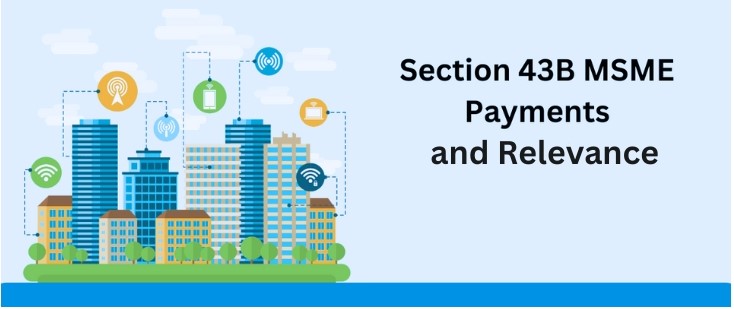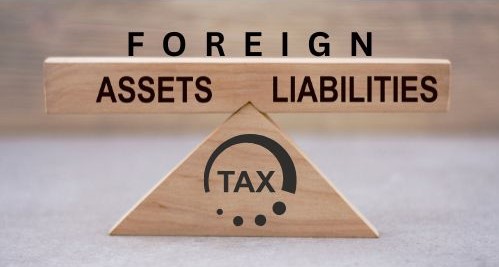Category: Income tax
The Ultimate Guide to Income Tax Return (ITR) Filing – Refunds & Save Tax
Filing your Income Tax Return (ITR) is not just a legal obligation but also a way to ensure you claim your rightful tax refunds and benefits under the Income Tax regime. Whether you're a salaried individual, business owner, or freelancer, understanding the different ITR forms, exemptions, and deductions can help you save money and stay compliant.
At GADHIA ASSOCIATE , we are the best tax consultants in Gujarat, offering expert ITR filing services with years of experience. Our team ensures accurate, hassle-free tax filing while helping you maximize tax exemptions and refunds.
Why Filing ITR is Important?
1. Legal Compliance – Mandatory for individuals with income above the taxable limit.
2. Claiming Tax Refunds – If excess tax has been deducted (TDS), filing ITR helps you get a refund.
3. Loan & Visa Approvals – Banks and embassies often require ITR receipts as proof of income.
4. Carry Forward Losses – Only possible if ITR is filed on time.
5. Avoid Penalties – Late filing attracts interest and fines under the Income Tax Act.
Different Types of ITR Forms – Which One Should You File?
The Income Tax Department has multiple ITR forms based on income sources and taxpayer category. Choosing the correct form is crucial to avoid rejection.
1. ITR-1 (Sahaj)
- For: Salaried individuals, pensioners with income up to ₹50 lakh.
- Income Sources: Salary, one house property, other sources (interest, dividends).
- Not Eligible: Business income, capital gains, or foreign assets.
2. ITR-2
- For: Individuals & HUFs without business income.
- Income Sources: Salary, multiple house properties, capital gains, foreign income.
- Not Eligible: Business or profession income.
3. ITR-3
- For: Individuals & HUFs with business/profession income.
- Income Sources: Business profits, salary, house property, capital gains.
- Who Should File: Proprietors, freelancers, partners in firms.
4. ITR-4 (Sugam)
- For: Small businesses & professionals under the Presumptive Taxation Scheme (Section 44AD/44ADA).
- Income Sources: Business with turnover up to ₹2 crore or profession income up to ₹50 lakh.
- Simplified Filing: Profit calculated at 6-8% of turnover.
5. ITR-5
- For: Firms, LLPs, AOPs (Association of Persons), BOIs (Body of Individuals).
- Not for: Individual taxpayers.
6. ITR-6
- For: Companies not claiming exemption under Section 11 (Religious/Charitable Trusts).
- Must be filed electronically.
7. ITR-7
- For: Trusts, political parties, NGOs, and entities under Sections 139(4A, 4B, 4C, 4D).
Income Tax Slabs (FY 2024-25 / AY 2025-26)
New Tax Regime (Default from FY 2024-25)
|
Income Range |
Tax Rate |
|---|---|
|
Up to ₹3 lakh |
Nil |
|
₹3-6 lakh |
5% |
|
₹6-9 lakh |
10% |
|
₹9-12 lakh |
15% |
|
₹12-15 lakh |
20% |
|
Above ₹15 lakh |
30% |
- Rebate under Section 87A: Full tax rebate if income ≤ ₹7 lakh.
- No major deductions allowed (except standard deduction of ₹50,000 for salaried).
Key Tax Exemptions & Deductions to Reduce Your Taxable Income
Under the old regime, you can claim various exemptions and deductions to lower your tax liability:
1. Section 80C (₹1.5 Lakh Deduction)
- Investments in PPF, ELSS, NSC, 5-year FDs, life insurance premiums, home loan principal repayment.
2. Section 80D (Medical Insurance)
- Up to ₹25,000 (₹50,000 for senior citizens) for health insurance premiums.
3. HRA (House Rent Allowance)
- Exemption available for salaried individuals paying rent.
4. Section 24(b) – Home Loan Interest Deduction
- Up to ₹2 lakh per year on home loan interest for self-occupied property.
5. LTA (Leave Travel Allowance)
- Exemption for travel expenses (limited to two trips in a block of 4 years).
6. Standard Deduction (₹50,000 for Salaried Individuals)
- Automatically deducted from gross salary.
Capital Gains Tax – Short-Term & Long-Term
1. Equity Shares & Mutual Funds
|
Holding Period |
Tax Rate |
|---|---|
|
STCG (Short-Term <12 months) |
15% |
|
LTCG (Long-Term >12 months) |
10% (above ₹1 lakh) |
2. Debt Funds & Other Assets
|
Holding Period |
Tax Rate |
|---|---|
|
STCG (<36 months) |
As per income slab |
|
LTCG (>36 months) |
20% with indexation |
Indexation Benefit: Adjusts purchase price for inflation, reducing tax.
AIS & TIS – New Compliance Tools
1. Annual Information Statement (AIS)
- Shows all financial transactions (salary, interest, dividends, stock trades).
- Helps verify income & avoid mismatches in ITR.
2. Taxpayer Information Summary (TIS)
- Simplified version of AIS.
- Used for pre-filling ITR details.
Why Choose Us? Best Tax Consultants in Gujarat
✔ Expert Tax Planning – Optimize deductions & tax regimes.
✔ Accurate ITR Filing – Avoid notices & penalties.
✔ Capital Gains Guidance – Minimize tax on stocks, property, mutual funds.
✔ AIS/TIS Reconciliation – Ensure no mismatch in income reporting.
Conclusion
Filing your Income Tax Return (ITR) correctly ensures compliance and maximizes tax refunds & exemptions. Whether you’re a salaried employee, business owner, or investor, choosing the right ITR form and claiming eligible deductions can significantly reduce your tax burden.
For hassle-free ITR filing, trust the experts at GADHIA ASSOCIATE . Contact us today for the best tax consultation in Gujarat!







